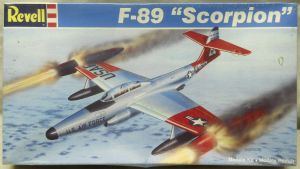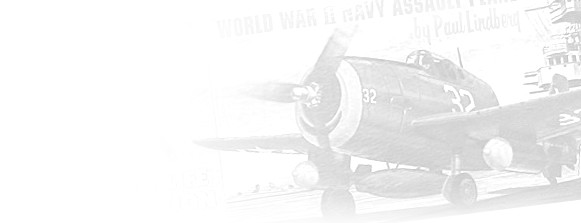Glencoe PT-76 Russian Amphibious Tank - (Ex ITC), 1/32, 06401
Plastic Model Kit, Box Condition: Sealed Exc
$18
Still factory sealed. From the original early 1960s ITC molds and an excellent 'classic builder.'
Hasegawa Mitsubishi A6M3 Zero Fighter Type 32 - Tainan FG NAP 1/C Takeo Tanimizu / 204 FG / Tainan FG, 1/72, AP16
Plastic Model Kit, Box Condition: Sealed Exc+

$22
Still factory sealed. Limited edition. Contains decals for all three aircraft. Very finely molded with all recessed panel lines, very good cockpit, engine and gear well detail as well as a centerline drop tank.
Aeromaster Mig-17F Choice Issue - Mig-17 F or Lim-6B Polish Mig-17F with Drag Chute Tail Cone - Egypt / Poland / Cuba, 1/48, CH4802
Resin Model Kit, Box Condition: Exc

$29
Rare limited edition - one of 1000 made. This is a multi-media model with injection molded main parts, many resin detail and conversion parts and brass PE parts also. With decals for all three aircraft listed. Never started. The parts are still in the internal factory sealed bags and includes decals and instructions. NOTE: instructions are quality photocopies.
Pacific Monograph Kaiten Mk 2/4, 1/96, PM96-02
Resin Model Kit, Box Condition: NM
$34
Very rare. Nicely molded kit with high-definition cast resin hull and numerous PE parts. The kit has never been started. The parts are still in the internal factory sealed bags and includes instructions.
Airmodel Focke-Wulf FW-56 Stosser Falcon - Luftwaffe or Austrian Air Force - Bagged, 1/72
Plastic Model Kit, Box Condition: NM
$10
Completely injection molded kit, not vacuform. Nicely molded. The kit has never been started. Inventoried with all parts and instructions present. This is the first Focke-Wulf design that Kurt Tank was responsible for. Later he designed the famous and effective 190 series.
Revell Kugisho P1Y1/2 Ginga (Milky Way) Frances, 1/72, H103-600
Plastic Model Kit, Box Condition: Exc++

$54
1972 Japan issue. Contains parts and markings to make P1Y1, P1Y1a, P1Y2 and PI2-S. Kit features full interior detail, detailed engines, optional position landing gear, and open or closed bomb bay with different bomb or torpedo loads. The model has never been started. The parts are either still in the factory sealed bag or have been inventoried 100% complete with all parts, decals and instructions.
Airfix Tiger Moth DH-82 - Bagged T3 Logo Issue, 1/72, 95
Plastic Model Kit, Box Condition: Exc++

$24
1960s bagged issue with an 'excellent++' condition Type Three logo header. The kit has a new (modern) replacement bag as the original bag was disintegrating. Never started. It has been inventoried complete with all parts and includes decals and instructions.
Pegasus Messerschmitt Me-109H V1 (W.Nr. 15708), 1/72, 2015
Multimedia Model Kit, Box Condition: Exc
$34
Limited issue - one of 2000 produced. Very nicely molded fine recessed panel line injection molded main parts with excellent cast white metal details, full decals and extensive information on painting the 109H V1. The kit has never been started. Internal factory sealed bag including decals and instructions.
12 Squared Messerschmitt Me-328 B-1 Pulse Jet Fighter - Bagged, 1/72, 2-21
Plastic Model Kit, Box Condition: Sealed Mint
$18
Still factory sealed. Limited run injection molded model. Includes cockpit, clear canopy, metal jet tubes, landing gear and more.
Revell Northrop F-89D Scorpion, 1/80, 4352
Plastic Model Kit, Box Condition: Sealed Exc

$26
Still factory sealed. 1987 issue and from the original 1950s "S" kit molds. Makes an ideal builder. Molded in silver and clear with decals for the box art aircraft.
Pegasus Junkers D-1 - Bagged, 1/72, 19
Plastic Model Kit, Box Condition: Sealed

$24
Factory sealed. The Junkers D-1 was a evolutionary all-metal, low-wing German Attack Aircraft of late WWI. The actual model is a limited release and one of only 2000 kits made. Very high quality injection moldings. Complete with instructions and full decals.
Revell Dream Car Bumpers and Grilles, 1/25, C1152
Plastic Model Kit, Box Condition: Good+

$23
Rare. Narrow-box issue of the 'Custom Car Parts' from the early to mid 1960. All parts are chrome plated and the instructions are on the reverse of the card. Never used. Inventoried and NOTE: missing two large round tail lights. Otherwise complete with all other parts and instructions. Revell also released an unboxed version of this model with the same part number and kit name but mounted on a cardboard blister-pack.
Pegasus Albatros D-Va, 1/72, 1024
Plastic Model Kit, Box Condition: Exc
$16
Limited edition kit with injection molded main parts and cast metal details. Very finely molded. This kit has not been started. The parts are either still in the factory sealed bag or inventoried 100% complete with all parts, decals and instructions.
Fujimi Mitsubishi A6M1 Zero-Sen Type 21, 1/70, 0701-70
Plastic Model Kit, Box Condition: Sealed NM
$17
Still factory sealed. Early 1970s issue with excellent box artwork. Features retractable landing gear, rotating wheels and props, pilot figure and seat. Molded in dark green and clear.
LS Mitsubishi A6M5 Type 52 Zeke, 1/72, 6
Plastic Model Kit, Box Condition: Good-
$26
Very early LS kit dating from the start of the 1960s. Even at this early date, you can see why LS became legendary for quality. Features well molded parts with all fine recessed panel lines, decals for several aircraft, moving rudder, wing flaps and ailerons, choice of drop tank or bomb, sliding canopy, retracting landing gear and decals for a large number of aircraft. The kit has never been started. The parts are still in the internal factory sealed bags and includes decals and instructions. Even the original glue is present. Please note, this box has closed tears and damage to the upper right. The fact that Hasegawa still uses some LS molds testifies to their detail and accuracy.
Huma Model DFS-230 A Glider - Bagged, 1/72, 3000
Plastic Model Kit, Box Condition: Good-
$20
Finely molded with recessed panel lines, subtle fabric texture, clear windows and extensive, large decal sheet for German Civil and five different Luftwaffe aircraft. The kit has never been started. It has been inventoried complete with all parts and includes decals and instructions.
Revell Custom Car Bumpers And Grilles, 1/25, C1154
Plastic Model Kit, Box Condition: VG

$26
Rare. This is the narrow box version of the early 1960s 'Custom Car Parts' Bumpers and Grills. All parts are chrome plated and the instructions are on the reverse of the card. Never started. It has been inventoried complete with all parts. The other issue was the same part number and title but packed in a card with a clear plastic blister-pack. Although these are not dated, I believe the blister-pack/card version to be the later issue.
Huma Model Grunau GR-9 and Schulgleiter SG-38, 1/72, 2505
Plastic Model Kit, Box Condition: VG
$26
Limited run injection molded kit that contains both pre-war gliders. Never started. Inventoried 100% complete with all parts, full decals and instructions.
La Belle DSP & PRR Tiffany Reefer HOn3 Narrow Gauge - Craftsman Model, 1/87, HOn3-36
Wood and Metal Model Kit, Box Condition: VG
$22
During the golden era of realistic train models, La Belle Woodworking Company created perhaps the very finest scale kits of early American equipment. The kit features die cut hardwood parts (no balsa) such as pre-cut and scribed sides all cut to the correct size, car ends done in the same fashion, excellent underside and cast metal details, building instructions and plans and decals/transfers. I have seen these models built and they look identical to the real prototypes. The kit has not been started. Inventoried and NOTE: missing both queenpost. Otherwise complete with all other parts, transfers and instructions accounted for. Please read the article on this website about older HO train kits and the modeling revolution they created in the late 1930s/1940s, predating the plastic kit boom by more than a decade.
MPM Mil Mi-1 Hare - USSR / Polish / Czech Air Forces, 1/72, MP72005
Plastic Model Kit, Box Condition: VG+

$12
Very successful early Soviet helicopter that saw extensive service in the USSR, Warsaw Pact and Finland, China, Egypt and Syria. Production ended in 1965 after 17 years and over 2000 Mi-1s were built. Kit features fine recessed panel lines and decals for the three air forces listed. The kit has never been started. The parts are either inventoried 100% complete. Includes decals for all countries listed and instructions.
